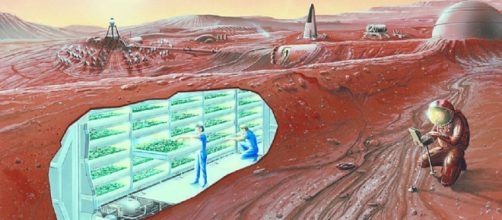When people start living on the moon and Mars on a permanent basis, they are going to need to grow their own crops to produce food to eat. Indeed, in the recent hit movie, “The Martian,” Matt Damon’s character grew potatoes to survive long enough to be rescued. With that in mind, researchers at Wageningen University in the Netherlands have been trying to grow crops in simulated lunar and Martian soil. The first attempt was not successful. The second, however, proved to have promising results.
The researchers used simulated lunar and Martian soil provided by NASA.
Dirt from the Arizona desert stood in for lunar soil while the simulated Martian soil was extracted from a volcano in Hawaii. The Dutch scientists grew tomatoes, rye, radishes, peas, leeks, spinach, garden rocket, cress, quinoa and chives along with some grass to help retain water and serve as fertilizer. The farming experiment took place in an indoor greenhouse with controlled atmosphere, lighting, temperature, and water supply, the idea being that is how crops will be grown in future space colonies.
The Martian soil simulant produced as much biomass as the controlled Earth variety and the lunar soil produced about half as much. The crops were not eaten because both soil simulants contained heavy metals such as lead, arsenic and mercury and thus were poisonous.
The planned third experiment will attempt to address that concern. The effort will be crowd-funded, with the idea that investors will be awarded a dinner that will include “Martian” potatoes and beans.
The development of space agriculture is vital to the long-term prospects for deep space exploration. NASA astronauts will be obliged to spend a year or more on the Martian surface when expeditions to that planet are scheduled to begin in the 2030s. The European Space Agency plans to have people living on the lunar surface in a “moon village” on a more or less permanent basis. Shipping all the food needed for living on the moon and Mars from Earth would be prohibitively expensive. Thus, future astronauts will have to learn to live off the land, as it were, sooner rather than later.

